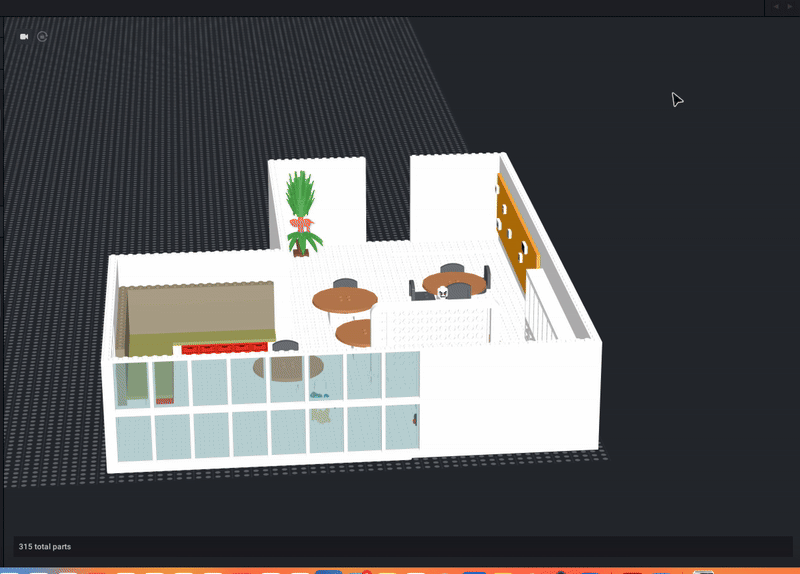Transitioning to Playful Learning
Developed a platform enabling teachers to adopt playful learning through user research, prototyping, resource sharing, personalized recommendations, and accessible classrooms.
Client
Anglia Ruskin University
Year
2024
Scope
Field Research, User Interviews, Wireframing, Storyboard, Prototyping, User Testing,
Tools
Figma, Google Forms, Midjourney, Miro
About
This project explored how to support teachers in shifting from traditional instruction to playful, creative learning methods.
We collaborated with Anglia Ruskin University and drew inspiration from Copenhagen’s PlayLab - a learning environment designed to make teaching more engaging and interactive.
Challenge
How might we help teachers adopt playful learning practices, despite cultural barriers, lack of confidence, and limited access to resources?
Process
The Design Framework used in this project was Design Thinking, where we followed the 5 steps in the process.
Empathise
Field observation conducted at PlayLab to gain a deeper understanding of both the physical setup and the cultural aspects of the learning environment.
We began by immersing ourselves in the context of playful learning:
Stakeholder interviews were conducted with teachers who expressed a range of opinions, from strong enthusiasm to cautious skepticism, regarding the implementation of playful learning approaches.
Empathy maps to capture motivations, frustrations, and accessibility needs.
We created an empathy map for Kathryn, a mid-career lecturer with a traditional teaching style, to understand her better.
She feels uncertain and hesitant about new technology, lacking confidence to keep up. While peers experiment with immersive methods, she hears mixed feedback regarding time and effectiveness.
Kathryn struggles with adapting, worries about classroom distractions, and balances tradition with innovation. Her main challenges are a packed schedule, uncertainty about student response, and fear of failure.
However, with better training and support, she can gain confidence, enhance learning, and align with modern practices. These insights guided our platform to address her concerns and empower her teaching.
Define
#1
Teachers differ widely in confidence and openness to playful learning - solutions must support both beginners and early adopters.
From research, we synthesized several critical insights that shaped our design direction:
#2
Accessibility matters: classrooms must be engaging but not overwhelming (important for neurodiverse students).
#3
Resource management and clear organization are critical; chaotic or cluttered spaces discourage teachers from trying new methods.
#4
A peer-driven system for sharing activities and experiences increases teacher motivation and trust.
Ideate
We explored a wide range of possible solutions, using creative tools to encourage divergence:
Using prompts on Midjourney, we generated an idea visualisation for the physical classrooms, enabling interactive teaching.
Ideation workshops using sketching and Crazy 8s to explore concepts for both physical and digital solutions.
To illustrate the value of our solution, we created a storyboard that follows Kathryn, a teacher exploring immersive learning. This visual narrative mapped her journey from initial awareness through hands-on adoption in the classroom.
By grounding the concept in a relatable scenario, we highlighted how the platform simplifies onboarding, inspires collaboration among educators, and unlocks creative teaching opportunities. The storyboard became a powerful communication tool — aligning the team on user needs while making the solution tangible for stakeholders.
Prototyping
We developed two complementary prototypes:
Physical PlayLab Concept
A flexible classroom setup with
movable furniture,
color-coded storage, and
interactive walls, allowing teachers to quickly adapt the environment.
Immersive Teaching Platform
A digital tool where teachers can browse, share, and review playful teaching activities. A built-in quiz helps match teachers with activities tailored to their subject, experience, and comfort level.
Together, these solutions addressed both the physical space and the knowledge-sharing ecosystem needed to foster creative learning.
Testing
We tested the digital platform prototype with teachers by asking them to complete specific tasks, such as exploring activities and using the quiz feature. The sessions revealed several opportunities for improvement:
Navigation required too many clicks, slowing down task completion.
Activity descriptions lacked depth, leaving teachers unsure about how to implement them.
Image-heavy layouts felt overwhelming, reducing clarity and focus.
Quiz questions were too general, making recommendations feel less personalized.
These insights highlighted the need to simplify navigation, enrich content descriptions, balance visual elements, and refine the quiz for more tailored results.
Keep reading!
It’s a Match: Rethinking Trust in Dating Apps
UX Research · Algorithmic Trust · Data Privacy · Inclusive Design · User Agency
Redesigning Danish Health App (MinSP)
Healthcare UX · Notifications · Wayfinding · Patient Engagement · Service Redesign
Cludo Dashboard Widgets (SaaS)
Dashboard Design · Data Visualization · Widget Design · SaaS · Accessibility














